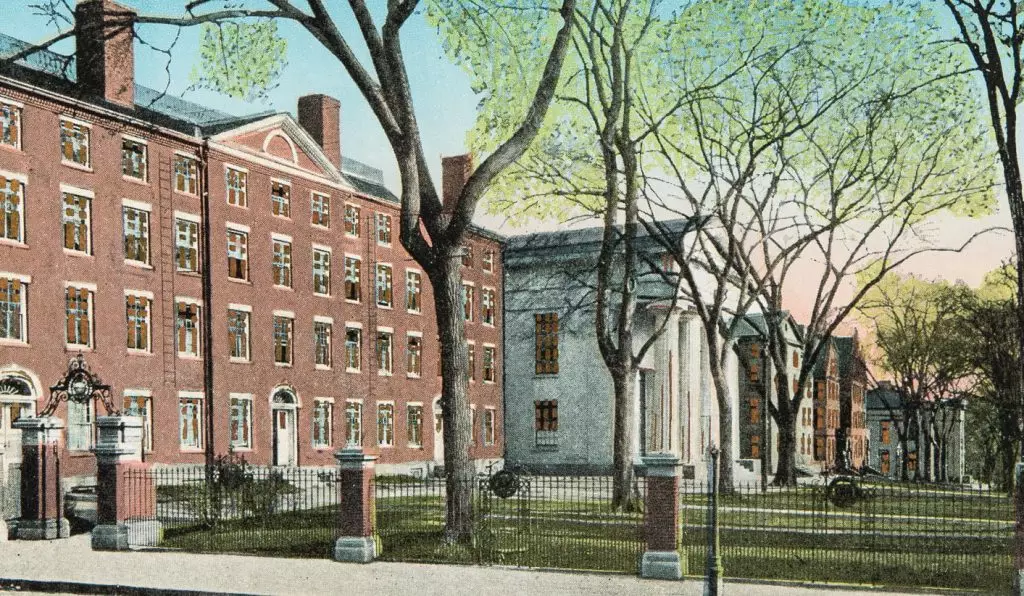After years of excavations of sites close to Brown University, Archaeology of College Hill shifted to Brown University’s own “Quiet Green” in 2012. The move to campus was prompted by an interest of both students and instructors in the history of the university itself after many years of focusing on the surrounding area. It also coincided with the lead-up to Brown’s 250th anniversary celebration in 2014 and added a material dimension to a university-wide call for research on and engagement with the history of the institution.

The Quiet Green is surrounded by most of the university’s oldest buildings, including University Hall, the university’s first building (constructed in 1770), and Hope College dormitory (constructed in 1822). The Quiet Green was also the location of the original university President’s House, which was later removed. In selecting specific excavation sites, students highlighted two topics of particular interest: the domestic lives of the earliest students on campus and those of the first university presidents. Hope College Dormitory (constructed in 1822) still stands on the Quiet Green and several students took special interest in the building because they were residents there at the time. They also began researching the first President’s House, which was originally located adjacent to Hope College (1770), but later moved down College Street (1840) and eventually demolished (1936). Following this initial research, our fieldwork in the first year took the form of a pedestrian survey across the entire green, a geophysical survey, and the excavation of two trenches at the dormitory, accompanied by archival research and analysis of our findings.
The classes that took place on the Quiet Green were designed as a three-year, self-contained research project beginning with archival research and site selection, proceeding to archaeological survey and excavation, and culminating with the production of a permanent museum display at the Joukowsky Institute for Archaeology and the Ancient World.
Site Directors:
- Andrew Dufton, Director, with Catherine Steidl (Fall 2014)
- Linda Gosner, Director, with Andrew Dufton (Fall 2013)
Additional Information:
- “Fragments of Student Life: An Archaeometric Approach to Life on College Hill, Brown University, Providence, RI”
Poster Presented at Society for Historical Archaeology, 2016
Miriam A.W. Rothenberg and Elizabeth A. Gurin - “Archaeology Underfoot: On-Campus Approaches to Education, Outreach, and Historical Archaeology at Brown University”
A Published Field Report of 2012-2014 Excavations of the President’s House on Brown University’s Quiet Green
by J. Andrew Dufton, Linda R. Gosner, Alex R. Knodell, and Catherine Steidl - The Archaeology of College Hill 2012: Investigations at Brown University
Edited by Alex R. Knodell and Linda R. Gosner